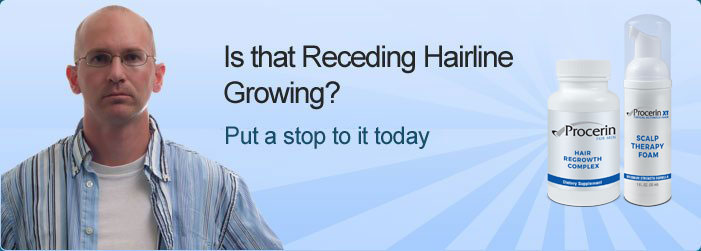Hair Loss Receding Hairline
Growing distress of receding hairline
Hair loss (receding hairlines) are, to some, the greatest concern of each passing day. Before, hair loss was thought to be limited to just the elderly. But nowadays, it affects up to fifty percent of the population at some point in their lives. This means a greater number of individuals suffering from the hair loss/receding hairline problem, and more people suffering from the distress it causes.
Usually each we lose 50-100 strands of hair per day. But when hair starts falling out in lumps and bald patches begin to form on your head, it is time for some damage control. There are several reasons for hair loss, including:
- Genetic factors: receding hairline can be inherited from either parent.
- Hormone imbalances: male testes produce a testosterone hormone called androgen, which is responsible for the growth of secondary sexual characteristics in men. Androgen combines with the enzyme Alpha 5 reductase, resulting in the formation of DHT. Over activity of DHT on the scalp results in receding hairlines. Hair starts thinning from the frontal portion of the forehead and later from the whole scalp. DHT imbalances can cause hair loss in women too. All DHT related hair loss is called andro-genetic alopecia.
- Alopecia areata: a common type of hair loss/receding hairline that is found in solely in women.
- Fungal infections: this is usually seen in young children who are careless and do not know how to manage their hair. This can be detected at an early stage and can be cured with the help of pills and lotions available on the market.
- Mental distress, anxiety or pollution in the environment: any kind of environmental stress can cause hair loss/receding hairlines.
- Malnutrition, prolonged illness or chronic diseases can also be the cause of receding hairlines.
- Chemotherapies used in cancer treatment.
- Child birth and menopause.
All of these factors contribute to the malfunctioning of the hair follicles that lie underneath the surface of the scalp. Hair comes out of these follicles. Dermatologists have been working on hair loss treatment strategies for a very long time. DHT blockers, Rogaine (minoxidil solution) and Procerin are some of the commonly used medicinal treatments for hair loss/receding hairlines.
However, minoxidil has not been found to be very effective in helping female patients. Besides these medications, weaving, shampoos, conditioners, laser therapies, laser combs, laser brushes, and herbal lotions and pills are also used to treat receding hairlines.
You will get complete and detailed information on one of the leading hair loss and receding hairline remedies and DHT blockers on www.procerin.com






